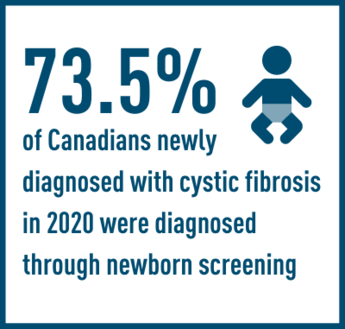New standards of care made available today by Cystic Fibrosis Canada
New Canadian standards support consistent care for all Canadians with CF
TORONTO (November 30, 2020) - Today, Cystic Fibrosis Canada launched the first in a series of new standards of care and guidelines related to the treatment of cystic fibrosis including Antibiotic Dosing Guideline for Cystic Fibrosis and Canadian Consensus Statement on Aerosolized Antibiotic Use in Cystic Fibrosis. These guidelines were developed with a Canadian focus, building on the current depth of knowledge and expertise of Canadian clinicians while leveraging other international research.
“We understand that Canadians living with cystic fibrosis may find themselves receiving care outside of a specialized CF Clinic due to sudden illness, injury, proximity or other reasons,” says Ian McIntosh, Director of Healthcare at Cystic Fibrosis Canada. “Making sure that our community has consistent, high-quality care that is the result of the greatest medical and clinical knowledge from across the country was a priority that we are thrilled to make available now. The current standards, and those planned for the near future, will help to provide current and timely information in a Canadian context, that can be referenced by any healthcare provider.”
Developed by Cystic Fibrosis Canada’s volunteer group of clinical advisors, including experts in CF healthcare and treatment, these standards will be particularly valuable for when patients are receiving care outside of a specialized CF clinic. The resources will be made available publicly, and can be accessed both by those living with cystic fibrosis and by care providers.
“Our intention behind the development and publication of these resources is to broaden the reach of our clinical knowledge beyond existing specialized CF Clinics when needed,” says Dr. Valerie Waters, Cystic Fibrosis Physician at The Hospital for Sick Children (SickKids) and Vice-Chair of the Healthcare Advisory Council. “Using the expertise of physicians and clinicians who have been providing exemplary CF care to Canadians for decades, these Guidelines and Standards of Care are the first in a series that will eventually provide a comprehensive source of knowledge on the main disciplines and components of CF care.”
Two new standards of care are currently planned for development and release in 2021. These standards and guidelines have been made possible with the support of Cystic Fibrosis Canada donors and will act as a repository of support materials, made accessible to clinicians across the country who may not regularly provide care to Canadians with CF. By making these resources available, Cystic Fibrosis Canada hopes to ensure every Canadian living with cystic fibrosis receives the care they need, when and where they need it.
-30-
About cystic fibrosis
Cystic fibrosis is the most common fatal genetic disease affecting Canadian children and young adults. There is no cure. Of the Canadians with cystic fibrosis who died in 2018, half were under the age of 33. Cystic fibrosis is a progressive, degenerative multi-system disease that affects mainly the lungs and digestive system. In the lungs, where the effects are most devastating, a build-up of thick mucus causes severe respiratory problems. Mucus and protein also build up in the digestive tract, making it difficult to digest and absorb nutrients from food. In addition to the physical effects of the disease, mental health concerns are emerging; anxiety and depression are common among this population. Double lung transplants are the final option for patients with end-stage disease; most fatalities of people with CF are due to lung disease.
About Cystic Fibrosis Canada
Cystic Fibrosis Canada has dramatically changed the cystic fibrosis story. We have advanced research and care that has more than doubled life expectancy. Since being founded by parents in 1960, Cystic Fibrosis Canada has grown into a leading organization with a central role engaging people living with cystic fibrosis, parents and caregivers, volunteers, researchers and healthcare professionals, government and donors. We work together to change lives through treatments, research, information and support. Despite our remarkable progress together, we are not yet done. Not when a child with cystic fibrosis still has only a 50% chance of living to 52. We will keep pushing, keep going further until all people with cystic fibrosis can and do experience everything life has to offer — and enjoy everything life has to offer. Learn more at www.cysticfibrosis.ca




